By Nii B. Andrews.
It has been a stressful week devoted to transitioning, questioning and consolidation; it is called life and it happens.
But then a review of the around 20 choice lots from private European and American art collections, scheduled for the Africa and Oceania Sotheby’s Paris pre summer sale on June 8, yielded yet another stunning, splendid and superlative masterpiece from Africa; a piece which is capable of inspiring numinous thoughts.
It is a sublime kneeling female figure executed by a ?Senufo master.
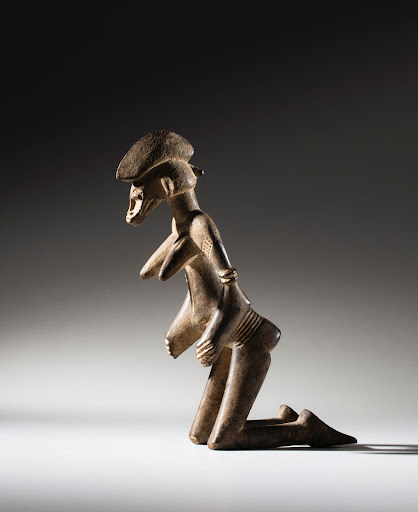
We must hasten to emphasize that the popular conception that each and every style can be identified with a precise location on the map is grossly inaccurate.
The spatial organization of a style is almost always fragmented; styles are connected to people rather than physical space and sculptors could learn or exchange styles and techniques with individual artists from diverse locations.
All such anthropomorphic statues among the Senufo are covered by the term tugu (pl. tugubèlè)– and may represent living persons, human ancestors, or beings that no ordinary man or woman can see.
Central to this usage is the shape, which must resemble that of a man or a woman.
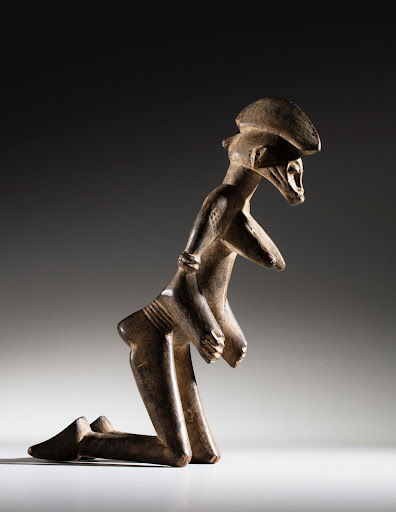
This particular piece is both rare and of exceptional quality.
The artist has executed a figure with a bent backward body in a kneeling posture whereas most ritual objects from the Senufo canon are upright figures.
Even if the kneeling posture is associated with work by women at home and in the fields, is this unique to Senufo culture or African tradition? Besides is work not a form of prayer?
The artist has achieved complete harmony and an accompanying synergy with the geometric forms that constitute the sculpture; mass and space are placed in striking counterpoint but with extraordinary balance.
When viewed from the side; there are two adjacent albeit uncompleted “open rectangles” – between the lower jaw and upper breast; between the lower breast and the upper part of the protruding belly.
Either one of these is flanked above and below respectively by two open v shapes; pure class.
These v shapes are echoed posteriorly – between the upper and lower part of the coiffure; its lower part and the occiput; in the lower part, involving the back of the thighs and leg.
The posture of supplication (kneeling and bending) is emphasized many times by the sculptor.
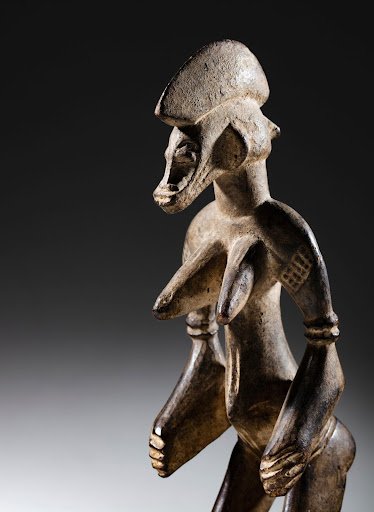
The scarification marks on the face (with its protruding jaw) and upper arms provide added visual interest and reference obliquely, the civilizing – make that, the enlightening and philosophical thrust of the piece.
The scholar Till Försters of the University of Basle opines in the auction catalog:
“…. the figure is comparatively high for an object that might have been part of a diviner’s ensemble, but it is also too small for an object of Poro, the men’s secret society.
The figure, however, shows clear signs of use, and it has a fine patina that points to a long integration into ritual practices.
It may have been part of the female Sando’o society, which was a complement to the male dominated Poro.
This secret society had paraphernalia that were kept undisclosed to men, and later to researchers which may explain why no other example with similar iconography was ever recorded.”
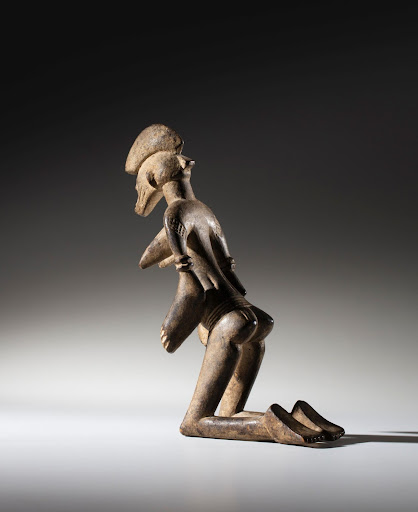
The lower arms and hands in the figure appear to have been carved in a somewhat elementary manner when compared to the face, legs and upper torso.
Perhaps, this was a deliberate gesture by the artist in order to remind us that the tugubèle are primarily moral beings, advisors on the enforcement of the moral codes and prerogatives, the sacred truths.
It has been conjectured that the figure was executed in the late 19th or early 20th century and was “collected” in the 1940s in the area that is now part of northern La Cote D’Ivoire.
Today, this virtuoso piece from West Africa, should inspire and uplift us all; it is part of our common human heritage.
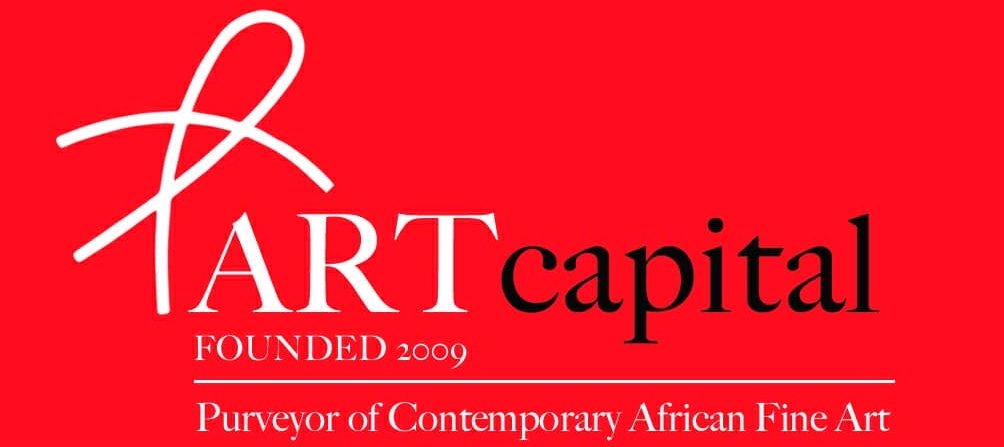
Wow. Beautiful. Thank you for sharing. A pleasure reading the review.
Splendid piece indeed.
Love the unusual form whereby the artist renders the figure on its knees.
Quite uncommon and striking.
Would love to own it, if I could.
Are you going to buy it?
–But on a light note–Or better still, are you going to buy it for me?
NBA response: I wish I could, we shall keep praying.
So beautifully written and I learned a lot from the article. Thanks for sharing. The work is truly exceptional.
Splendid writing!
Great narrative. Thank you for sharing.